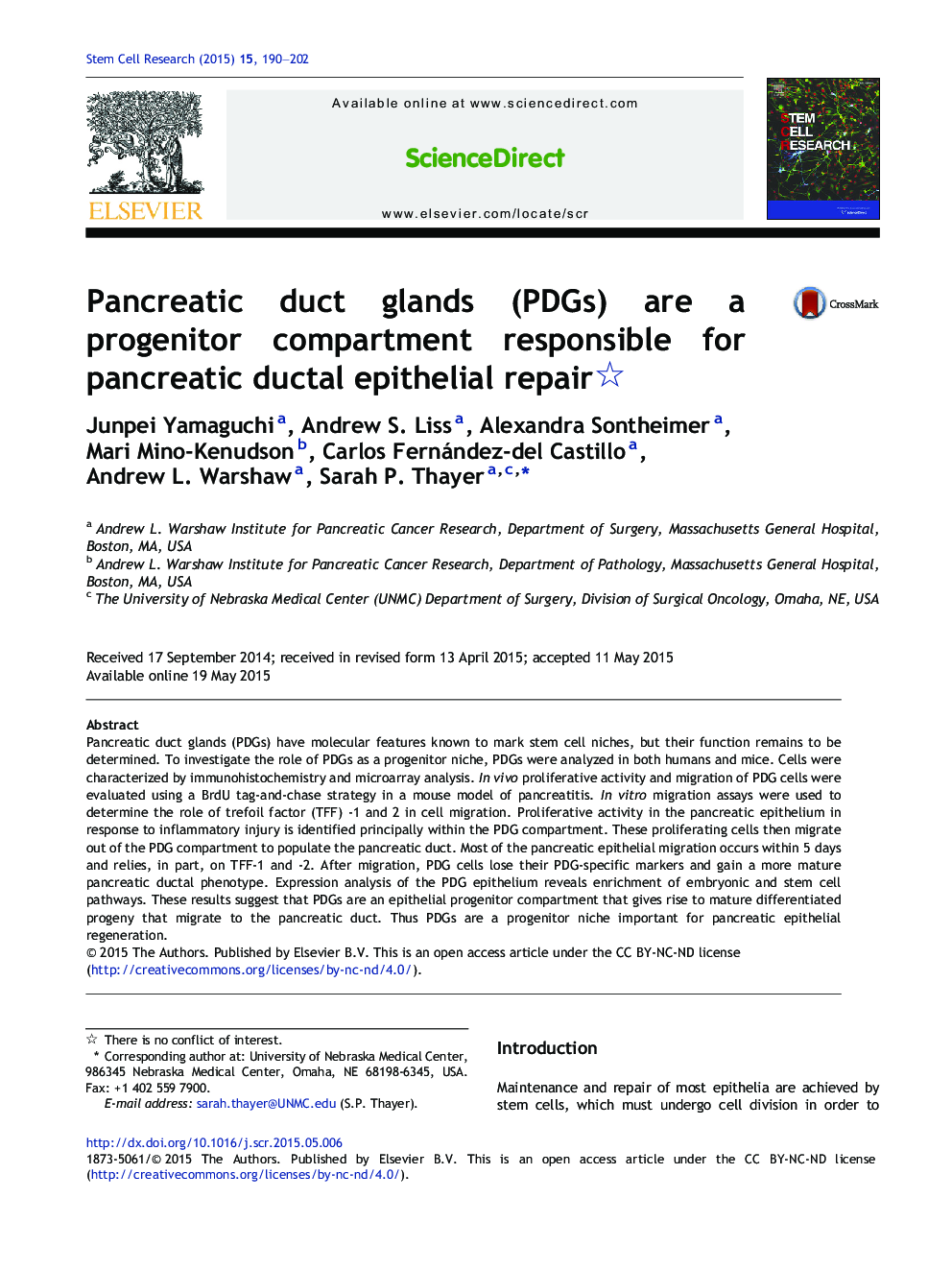| Article ID | Journal | Published Year | Pages | File Type |
|---|---|---|---|---|
| 2094077 | Stem Cell Research | 2015 | 13 Pages |
•PDGs are the principal site of proliferation of pancreatic ductal epithelium.•Newly generated cells show dynamic shift from the PDGs to the ductal epithelium.•Progeny express differentiated epithelial markers.•Migration of these cells is in part regulated by trefoil factors -1 and -2.•PDG compartments enrich for embryonic and somatic stem cell pathways.
Pancreatic duct glands (PDGs) have molecular features known to mark stem cell niches, but their function remains to be determined. To investigate the role of PDGs as a progenitor niche, PDGs were analyzed in both humans and mice. Cells were characterized by immunohistochemistry and microarray analysis. In vivo proliferative activity and migration of PDG cells were evaluated using a BrdU tag-and-chase strategy in a mouse model of pancreatitis. In vitro migration assays were used to determine the role of trefoil factor (TFF) -1 and 2 in cell migration. Proliferative activity in the pancreatic epithelium in response to inflammatory injury is identified principally within the PDG compartment. These proliferating cells then migrate out of the PDG compartment to populate the pancreatic duct. Most of the pancreatic epithelial migration occurs within 5 days and relies, in part, on TFF-1 and -2. After migration, PDG cells lose their PDG-specific markers and gain a more mature pancreatic ductal phenotype. Expression analysis of the PDG epithelium reveals enrichment of embryonic and stem cell pathways. These results suggest that PDGs are an epithelial progenitor compartment that gives rise to mature differentiated progeny that migrate to the pancreatic duct. Thus PDGs are a progenitor niche important for pancreatic epithelial regeneration.
